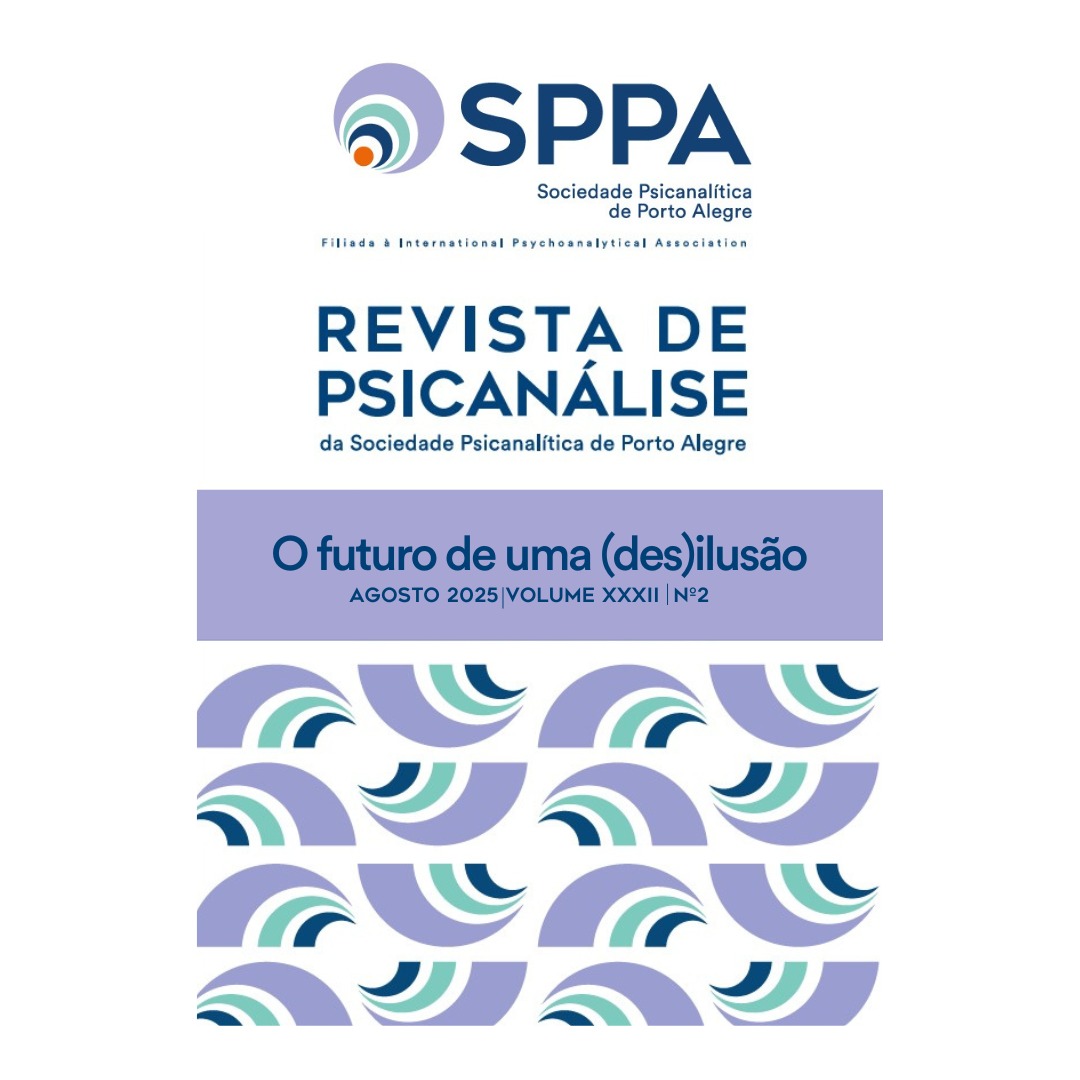Look for the light
a psychoanalytic study of fictional trauma in the video game The last of us
Keywords:
Video games, Psychoanalysis, Psychological trauma, Survivorship, Bereavement, Emotional bonds, Father-child relations, Adolescence, SexualityAbstract
This article addresses trauma and psychic survival based on fictional elements from the video game The Last of Us (2013) from a psychoanalytic perspective. In this regard, the study of trauma is crucial for understanding the human psyche. Fictional examples can help in understanding psychoanalytic discourses and the biopsychosocial implications of this theme in real clinical practice. The narrative of The Last of Us explores the struggle for survival and the complexity of social relationships in a world devastated by a pandemic. The protagonists, Ellie and Joel, embark on a journey across the United States in search of a cure for the infection caused by the Cordyceps fungus. Despite its fictional nature, the narrative highlights elements and situations widely present in the real world. Traumatic experiences, the mourning process, emotional bonds, dysfunctional family dynamics, adolescence, and sexuality are some of the elements that transcend the fictional nature of this narrative. This article demonstrates that fictional trauma and its psychoanalytic implications can be used to assist the real-life clinical practice of the psychoanalyst, thereby expanding the understanding of psychoanalysis applied to cases of post-trauma survival.
Downloads
References
Beserra, A. P. (2012). O discurso do desejo na psicanálise freudiana [Monografia de graduação em Psicologia, Universidade Católica de Brasília]. Repositório da UCB. https://repositorio.ucb.br:9443/jspui/bitstream/10869/1260/1/Adriano%20Pereira%20Beserra.pdf
Bokanowski, T. (2015). Le concept de traumatisme em psychanalyse. Sillages critiques, 19. doi.org/10.4000/sillagescritiques.4153
Caropreso, F. (2013). Pulsão da morte, trauma e limites da terapia para Freud. Analytica, Revista de Psicanálise, 2(2), 59-76.
Castaneda, L. (2019). Healthcare and the biopsychosocial model: understand to act. Codas, 31(5). https://doi.org/10.1590/2317-1782/20192018312.
Chemama, R. (2020). O trauma segundo a psicanálise – alguns pontos de abordagem. Deslocamentos: Revista franco-brasileira interdisciplinar de psicanálise, 1(2), 13-20.
Christ, G. H. et al. (2013). When children die: improving palliative and end-of-life care for children and their families. Washington: The National Academies Press.
Cidade, N. O. P. & Zornig, S. A. (2016). Trauma, temporalidade e inscrição psíquica. Cad. Psicanal., 38(35), 29-47.
Círculo Psicanalítico do Rio de Janeiro. Sociedade de Psicanálise da Cidade do Rio de Janeiro (2016). Trauma e luto na criança e no adolescente: uma visão psicanalítica. Psicanálise e cinema, 4(4).
Erlich, S. (2008). Trauma coletivo e o espaço psicanalítico. Revista de Psicanálise da SPPA, 15(1), 157–171. https://revista.sppa.org.br/RPdaSPPA/article/view/487.
Fandom Games Community (2024). The last of us wiki. https://thelastofus.fandom.com/wiki/The_Last_of_Us_Wiki
Ferigato, S. H., Campos, R. T. O. & Ballarin, M. L. G. S. (2007). O atendimento à crise em saúde mental: ampliando conceitos. Revista de Psicologia da UNESP, 6(1), 31-44.
Freud, S. (1961). Letter from Sigmund Freud to Sandor Ferenczi, February 4, 1920 (Letters of Sigmund Freud 1873-1939). Psychoanalytic Electronic Publishing, 51, 328-329. https://pep-web.org/browse/document/zbk.051.0328a?page=P0328. (Trabalho original publicado em 1920)
Freud, S. (2011). Sigmund Freud obras completas volume 15: psicologia das massas e análise do eu e outros textos (1920-1923). São Paulo: Companhia das Letras. (Trabalho original publicado em 1920)
Freud, S. (2016a). Além do princípio do prazer. Porto Alegre: L&PM Editores. (Trabalho original publicado em 1920)
Freud, S. (2016b). Três ensaios sobre a teoria da sexualidade. In S. Freud, Obras completas (Vol. 6, pp. 13-155). São Paulo: Companhia das Letras. (Trabalho original publicado em 1905)
Kitrar, A. (2024). From console to screen: a comparative analysis of transmedia storytelling in The last of us game and TV series. [Dissertação de mestrado, Università Cattolica del Sacro Cuore].
Martins, F. (2023). Imersividade e diferença no cinema e nas artes. Aniki, Revista Portuguesa da Imagem em Movimento, 10(1), 138-155. 10.14591/aniki.v10n1.950.
McDougall, W. (1920). The group mind. Nova Delhi: Literary Licensing, 2014.
Naughty Dog. (2013). The last of us [Jogo eletrônico]. Sony Computer Entertainment.
Oliveira, A. A. A., Resstel, C. C. F. P. & Justo, J. S. (2014). Desamparo psíquico na contemporaneidade. Revista de Psicologia da UNESP, 13(1), 21-32.
Oliveira, S. M. (2015). O traumático na psicanálise e psiquiatria: implicações ético-políticas. Physis, 25(1). doi.org/10.1590/S0103-73312015000100003
Sadala, G. (2022). “Psicologia das massas e análise do eu”: pontuações e atualizações. Trivium, 14, 17–26.
Santos, E. S. (2022). Interação ambiental na psicanálise de Winnicott: uma aproximação com a abordagem enativista. Sofia, 10(1), 299–317. doi.org/10.47456/sofia.v10i1.32145.
Soares, R. O. (2021). Lembrar, repetir e elaborar: historicidade e restituição da relação com a experiência histórica brasileira. Lacuna: uma revista de psicanálise, 11, 10.
Souza, C. & Silva, D. N. H. (2018). Adolescence in debate: theoretical contributions in the light of the historical-cultural perspective. Psicologia em Estudo, 23. doi.org/10.4025/psicolestud.v23.e35751.
Teles, A. B. S. (2015). Arquitetura do cinema ficcional: o absurdo crível da ficção. Revista Eletrônica Extensão em Debate, 1(3).
Vygotsky, L. S. (2013). Sobranie sochinenii. Tom 4: pedologija podrostka. In Obras escogidas (Tomo 4). Madrid: A. Machado Libros. (Trabalho original publicado em 1928)
Winnicott, D. W. (1986). Home is where we start from: essays by a psychoanalyst. London: Penguin Books. (Trabalho original publicado em 1953)
Winnicott, D. W. (1990). The maturational processes and the facilitating environment: studies in the theory of emotional development. Abingdon-on-Thames: Routledge. (Trabalho original publicado em 1957)
Published
How to Cite
Issue
Section
License

This work is licensed under a Creative Commons Attribution-NonCommercial-NoDerivatives 4.0 International License.
Atribuo os direitos autorais que pertencem a mim, sobre o presente trabalho, à SPPA, que poderá utilizá-lo e publicá-lo pelos meios que julgar apropriados, inclusive na Internet ou em qualquer outro processamento de computador.
I attribute the copyrights that belong to me, on this work, to SPPA, which may use and publish it by the means it deems appropriate, including on the Internet or in any other computer processing.
Atribuyo los derechos de autor que me pertenecen, sobre este trabajo, a SPPA, que podrá utilizarlo y publicarlo por los medios que considere oportunos, incluso en Internet o en cualquier otro tratamiento informático.










